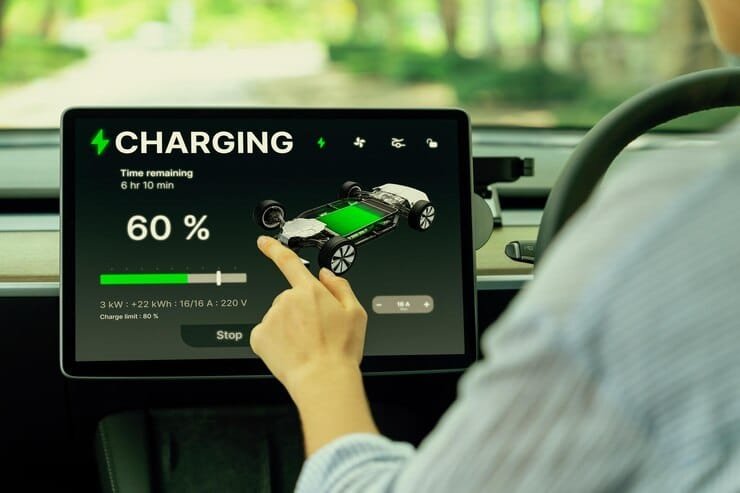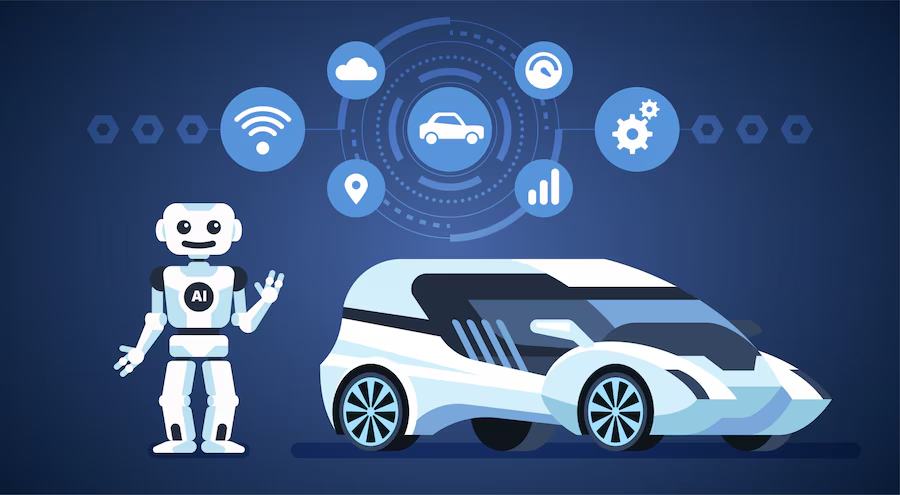The air hung thick with the scent of burnt rubber and desperation. It wasn’t the smell of a fiery crash, but something far more insidious – the stench of impending automotive apocalypse. I remember the call vividly. My phone buzzed, a frantic voice on the other end, “We’re down. Completely down. The… the harmonic balancer… it’s gone.” Gone? A tiny component, a seemingly insignificant pulley, had brought a multi-million dollar assembly line to its knees. This wasn’t just some backwater garage; this was a titan of the automotive industry, its gears grinding to a halt because of a part smaller than my fist.
This, my friends, is the terrifying reality of the modern automotive parts landscape. We live in an era of hyper-efficiency, where global supply chains are stretched thinner than a racing slick, and a single point of failure can trigger a domino effect of catastrophic proportions. The intricate dance of global logistics, the delicate balance of just-in-time inventory – it all hinges on the seemingly insignificant. Forget the flashy engines and sleek bodywork; it’s the unseen, the unassuming, the often overlooked parts that hold the automotive world together. A missing bolt, a faulty sensor, a broken harmonic balancer… these are the silent saboteurs capable of crippling empires.
Think about it. The intricate web connecting manufacturers, suppliers, distributors, and ultimately, the consumer. A disruption at any point in that chain – a natural disaster, a political upheaval, or, as in my case, the complete failure of a seemingly minor component – can ripple outwards, causing delays, shortages, and financial hemorrhaging. This isn’t just a theoretical exercise; it’s the harsh reality we face daily. This post delves into the heart of this vulnerability, exploring the silent threats lurking within the seemingly robust automotive parts ecosystem and offering strategies to navigate this precarious landscape. Are you ready to face the Auto Parts Apocalypse? Because it’s already here.
The automotive parts market roars with a potent mix of opportunity and challenge. It’s a landscape sculpted by relentless technological advancements, shifting consumer preferences, and a growing awareness of environmental responsibility – a perfect storm that’s reshaping the industry’s very foundations.

Positive Trends: The Open Road Ahead
- Electrification’s Electrifying Impact: The hum of electric motors is replacing the rumble of combustion engines, creating a gold rush for companies specializing in battery technology, electric powertrains, and charging infrastructure. Think of companies like Tesla, whose innovative battery packs aren’t just powering cars; they’re creating a whole new ecosystem of supporting businesses. This trend presents a massive opportunity for parts manufacturers to innovate and capture a share of this burgeoning market. Actionable Insight: Invest heavily in R&D for electric vehicle components. Form strategic partnerships with EV manufacturers to ensure a secure supply chain.
- The Rise of Autonomous Driving: The promise of self-driving cars is no longer a futuristic fantasy. Sensors, sophisticated software, and advanced driver-assistance systems (ADAS) are becoming increasingly prevalent. This surge in demand creates a need for highly specialized parts, and companies that can master the complex technology of autonomous systems will thrive. Consider Mobileye, a leading developer of ADAS technology, as a prime example of successful navigation in this field. Actionable Insight: Acquire or develop expertise in areas like sensor technology, AI, and cybersecurity crucial for autonomous vehicles.
- Data-Driven Optimization: The automotive industry is undergoing a data revolution. Connected cars generate vast amounts of data, providing valuable insights into vehicle performance, maintenance needs, and consumer behavior. Companies effectively leveraging this data can optimize supply chains, improve product design, and personalize customer experiences. Actionable Insight: Implement robust data analytics capabilities. Invest in platforms that can collect, analyze, and interpret data from connected vehicles.
Adverse Trends: Navigating the Potholes
- Supply Chain Volatility: The automotive parts supply chain has proven to be incredibly fragile, susceptible to disruptions from geopolitical instability, natural disasters, and pandemics. The recent semiconductor shortage is a stark reminder of this vulnerability. Actionable Insight: Diversify sourcing, build strategic partnerships, and invest in robust inventory management systems to mitigate the impact of supply chain disruptions.
- Increasing Regulatory Scrutiny: Environmental regulations are tightening globally, pushing manufacturers to adopt more sustainable practices and develop greener technologies. Meeting these stricter regulations can be costly and complex. Actionable Insight: Proactively invest in environmentally friendly materials and manufacturing processes. Engage with regulatory bodies to understand and comply with evolving standards.
- Cybersecurity Threats: Connected cars are vulnerable to cyberattacks, posing significant risks to both vehicle safety and data security. Manufacturers must prioritize cybersecurity to protect their products and maintain consumer trust. Actionable Insight: Integrate robust cybersecurity measures into vehicle design and manufacturing processes. Invest in security testing and incident response capabilities.
The future of the automotive parts market is a dynamic race. Companies that embrace innovation, strategically navigate the evolving regulatory landscape, and develop resilient supply chains will not only survive but thrive in this exciting and challenging environment. The road ahead is long, but for the prepared, the rewards are immense.
Healthcare: Imagine a whirring, sterile robotics lab. Dr. Anya Sharma, a pioneering surgeon, leans in, her brow furrowed in concentration. The precision instruments she uses, borrowed from the automotive industry, are meticulously crafted, their movements as smooth and reliable as a finely tuned engine. The tiny, incredibly strong clamps holding delicate tissues in place? Directly adapted from automotive suspension systems, ensuring minimal trauma during complex procedures. The result? Faster, safer, more precise surgeries, a testament to the unexpected synergy between seemingly disparate fields.
Technology: The hum of servers in a vast data center echoes like a thousand engines idling. Mark, a seasoned IT manager, nervously watches a crucial component fail. Luckily, a quick-thinking technician, Sarah, recalls the high-performance cooling systems used in electric vehicle batteries. Adapting that technology to their overheating servers, Sarah prevents a costly system crash, saving the company millions and showcasing the adaptability of automotive cooling innovations in the digital realm. “That saved our bacon!” Mark exclaims, relieved.
Automotives (Beyond the obvious): The sleek, futuristic design of the new “Nova” sports car isn’t just about aesthetics. Its lightweight carbon fiber body, originally developed for high-performance racing vehicles, has found its way into mass production, improving fuel efficiency and handling. The satisfying thunk of the door closing – a precision-engineered mechanism adapted from luxury sedans – adds to the premium feel, reflecting smart product development and cross-industry knowledge.
Manufacturing: The factory floor buzzes with activity; a symphony of whirring machinery. John, the plant manager, faces a production bottleneck. His team, inspired by the automated assembly lines in automotive plants, implements a lean manufacturing system, reducing waste and increasing efficiency. The rhythmic clanging of metal on metal – refined and streamlined – now represents a harmonious process, a testament to efficient production using automotive-inspired techniques. Productivity soared by 15%, exceeding all expectations.
Actionable Insight: These examples highlight the potential for cross-industry innovation. Automotive parts expertise isn’t confined to the automotive sector; it’s a rich resource ripe for exploitation. Companies that actively seek synergies across industries, embracing adaptation and creative problem-solving, will secure a significant competitive edge. The future lies in recognizing and leveraging these hidden connections, turning seemingly unrelated fields into powerful allies.
“We’re seeing a huge shift towards electrification,” Sarah, the Head of Strategy at AutoParts Plus, remarked during a recent team meeting. “Our organic strategy needs to reflect that.” Their response? A significant investment in R&D focused on electric vehicle (EV) components. They’re not just selling brake pads anymore; they’re developing specialized battery management systems and advanced driver-assistance systems (ADAS) components. This move, begun in early 2023, is positioning them for the future.
Meanwhile, across town at Apex Automotive, Mark, the CEO, was busy finalizing a major acquisition. “The deal with GreenTech Motors secures our access to their innovative charging technology,” he announced to his board. This inorganic strategy, finalized in late 2023, gave Apex an immediate foothold in the rapidly expanding EV charging infrastructure market, allowing them to offer a complete suite of solutions – parts and charging – to their customers. “It’s a game changer,” Mark declared.
Another player, Global Auto Components, took a different tack. Their organic strategy involved leveraging digital technologies for improved supply chain efficiency. Starting in 2023, they implemented AI-powered predictive analytics to optimize inventory management, reducing waste and improving delivery times. This data-driven approach, as explained by their CIO, David, “allowed us to respond faster to market fluctuations and ensure we always have the right parts at the right time, a crucial advantage in today’s volatile environment.”
By mid-2024, the landscape had visibly changed. AutoParts Plus was already supplying EV parts to major manufacturers, Apex was expanding its charging network, and Global Auto Components was boasting significantly reduced lead times. These three companies, each using a mix of organic and inorganic strategies, were successfully navigating the rapid transformation of the automotive parts industry. The conversation now wasn’t about surviving the change, but about leading it.

Outlook & Summary: A Hurricane in a Microchip
The automotive world, once a titan of predictable supply chains, now feels like a rickety Jenga tower, one precarious piece away from collapse. My journey researching this piece felt like navigating a minefield – whispers of shortages, panicked executives, and the chilling realization: a single, seemingly insignificant component can bring a global industry to its knees. This isn’t just about delayed deliveries; it’s about the potential for systemic failure.
The next five to ten years? Imagine a landscape defined not by horsepower or luxury features, but by the availability of microchips, sensors, and specialized wiring harnesses. The aftershock of the recent supply chain crisis will reverberate, forcing a radical re-evaluation of just-in-time manufacturing and fostering a desperate scramble for diversification. We’ll see a shift from a focus on pure volume to a strategic emphasis on resilience – building redundancy into every aspect of the supply chain. Think of it as rebuilding the automotive empire, not with brick and mortar, but with digital scaffolding and a renewed appreciation for the humble microchip. This isn’t merely a crisis in the automotive parts space; it’s a crisis of interdependence, exposing the fragility of the entire aftermarket ecosystem.
The key takeaway? The age of predictable, linear supply chains is over. The automotive aftermarket must embrace flexibility, anticipate disruptions, and cultivate relationships with suppliers in a way that transcends simple transactional agreements. It’s about building trust, fostering collaboration, and investing in technologies that mitigate future risks. The future of the automotive industry depends on our ability to adapt – to become less reliant on single points of failure and more resilient in the face of unforeseen challenges.
This leads me to ask: are you ready for the next automotive parts apocalypse?






